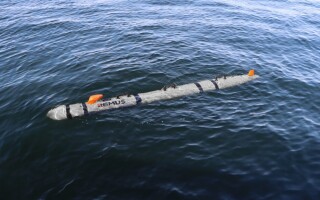Drop in DoD simulation and training market due to budget cuts
NewsJuly 29, 2015

MOUNTAIN VIEW, Calif. The defense simulation and training market in the U.S. is expected to shrink from from $13.11 billion in 2014 to $13.00 billion in 2019 at a negative compound annual growth rate of 0.2 percent, according to analysts at Frost & Sullivan in a report titled "DoD Training and Simulation Market."
They state that While live training still makes up about 50 percent of the U.S. Department of Defense (DoD) training budget, the demand for live training is steadily decreasing. A new emphasis on live, virtual and constructive (LVC) training combined with a flat budget will continue to reduce the cost set aside for live training, according to Frost & Sullivan.
DoD training and simulation providers will be forced to create robust LVC capabilities. However the networks, frameworks, hardware and software necessary for this effort will be expensive to develop - which means once sunk costs are absorbed and the systems are in place, overall annual training costs will drop to a new baseline and an optimal training mix for combat readiness will be achieved, Frost & Sullivan analysts say.
“Additionally, research, development, test and evaluation funding will remain flat during the forecast period, with a spike in 2019 caused mainly by the investment in the Air Force’s T-X trainer,” says Frost & Sullivan Aerospace & Defense Senior Industry Analyst Michael Blades, author of the report. “Operations and maintenance funding for training and simulation is forecast to shrink by 0.1 percent per year until 2019.” [Editor's note: the T-X trainer will replace the Air Force's T-38 Talon, pictured below.]
On average, training and simulation procurement funding will drop about 0.4 percent per year between 2014 and 2019. While the declining DoD budget will contribute to this trend, the main factor fueling the downswing will be the completion of initial training system deliveries for programs such as the P-8, KC-46 and the littoral combat ship (LCS).
Budget cuts and unpredictable future funding levels -- such as uncertainty with sequestration -- are hurting the U.S. DoD services’ ability to invest in and plan for training programs. Services have been able to absorb the budget cuts at the expense of combat readiness.
Contractors are being forced to operate on shorter deadlines, to expect smaller profit margins, and to work with reduced investment in research and development. This may stifle innovation for U.S. DoD training requirements and then compel companies to focus on more commercial applications for growth opportunities.
“The U.S. military services are dealing with a series of lowest price technically acceptable (LPTA) contracts; however, the DoD and program managers are struggling to define what is technically acceptable,” Blades notes. “Thus, the military and its industry partners must develop a reliable process to clearly outline and understand technical requirements.”
For more information on this report, visit www.frost.com/nee1.





